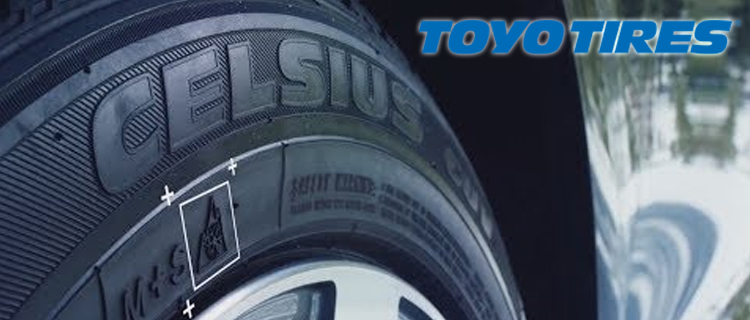Toyo All Season Tires Vs. The All-Weather Celsius: Why Upgrade In 2021
January 17, 2021
Tires

Despite their proven safety benefits, some Canadian drivers choose not to use winter tires. Today’s post explains when it makes sense to do so, and why Toyo tire buyers are upgrading to the All-Weather Celsius in 2021.
Read on or contact your local TIRECRAFT to start a free tire consultation straight away.
Winters, All-Weathers, And All-Seasons: What’s Right For You?
Back in 1998, only 35% of Canadian drivers used winter tires, but those numbers have been rising ever since, thanks in large part to the growing body of literature spotlighting their safety benefits, such as:
- A 2011 study by Le Ministère des Transports du Québec found that winter tires yielded a 5% decrease in winter road collisions, a 574 reduction in injuries related to winter road collisions, and a 3% reduction in death and serious injury (TRAC, 2020, p. 7)
- A report from the Traffic Injury Research Foundation found that cars driving on icy roads need 12.1 meters to stop with all-season tires, but only 6.4 meters to stop with winter tires
- A survey of over 1500 Canadian motorists conducted as part of TRAC’s 2020 Winter Tire Report showed that 81% of drivers believed winter tires had saved them from being involved in a potentially hazardous driving situation last year
Compared to 1998, today’s winter tire stats have reversed, with only 35% of drivers not using winter tires in 2020. This statistic excludes Quebec, where winter tires are required by law from December to March, but it still shows that the majority of Canadians are choosing to upgrade this year.
That said, winter tires aren’t right for everyone. For that 35% of the Canadian driving population, many of whom will be driving in warmer parts of Canada, such as Victoria, British Columbia, all-season or all-weather tires will actually be safer, since the rubber compound is designed for that climate, where temperatures stay above -7 degrees Celsius. Furthermore, choosing all-seasons or all-weathers over winter tires can also save you money by eliminating the costs of changeover services, storage, and extra sets of tires.
If you do choose to use all-seasons or all-weather tires this winter, we recommend choosing from a premium line-up, like Toyo’s all-season and all-weather offerings, to give you the best mix of cold-weather traction and warm-weather performance.
Of course, this raises another question: what’s best for your driving needs, all-seasons or all-weathers? What’s the difference? And how do you know when to upgrade? Read on to find out.
Toyo All-Season Tires Vs. The All-Weather Celsius: Why Upgrade?
All-weather tires are by no means a replacement for winter tires, especially in areas with severe winters, but they’re a fantastic option for those who experience milder conditions, yet still want a step-up in safety, performance, and fuel economy compared to traditional all-seasons.
All-weather tires work best for drivers who:
- Experience milder winters, but still face ice, snow, and slush on a regular basis
- Deal with unpredictable weather, such as late or early snowfall
- Demand greater winter performance than all-seasons provide in winter
- Cannot or will not change their tires come winter
Take the All-Weather Celsius for example. It’s a supercharged all-season tire that combines Toyo’s proven winter technology with enhanced performance for dry or wet roads, capable of delivering traction, comfort, and mileage. These are just a few of the key reasons why the Toyo All-Weather Celsius represents a clear step-up from an all-season tire:
- Signified by Transport Canada’s snowflake symbol
- Unique asymmetrical tread pattern and angle to maximize all-weather traction
- Advanced, specially formulated tread rubber compound split 50/50 to maximize dry road performance and cold-weather traction
- Tread alignment indicators that identify irregular wear before damage becomes extreme
- Superior dry road performance—available in S, T, H, and V speed ratings
- Staggered blocks with saw-tooth edges to reduce road noise and bite into ice, snow or slush
To learn more about the differences between Toyo all-season tires and all-weather upgrades, contact your local TIRECRAFT dealer for a 100% free consultation.
Back


